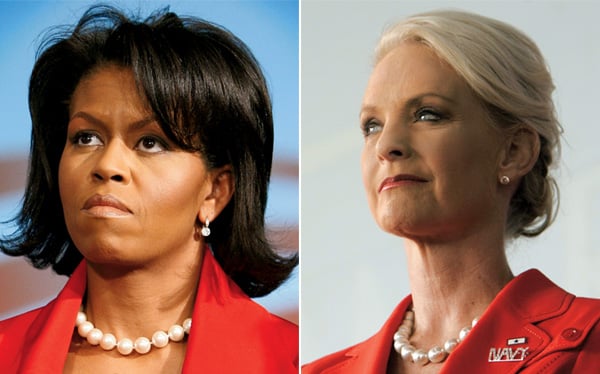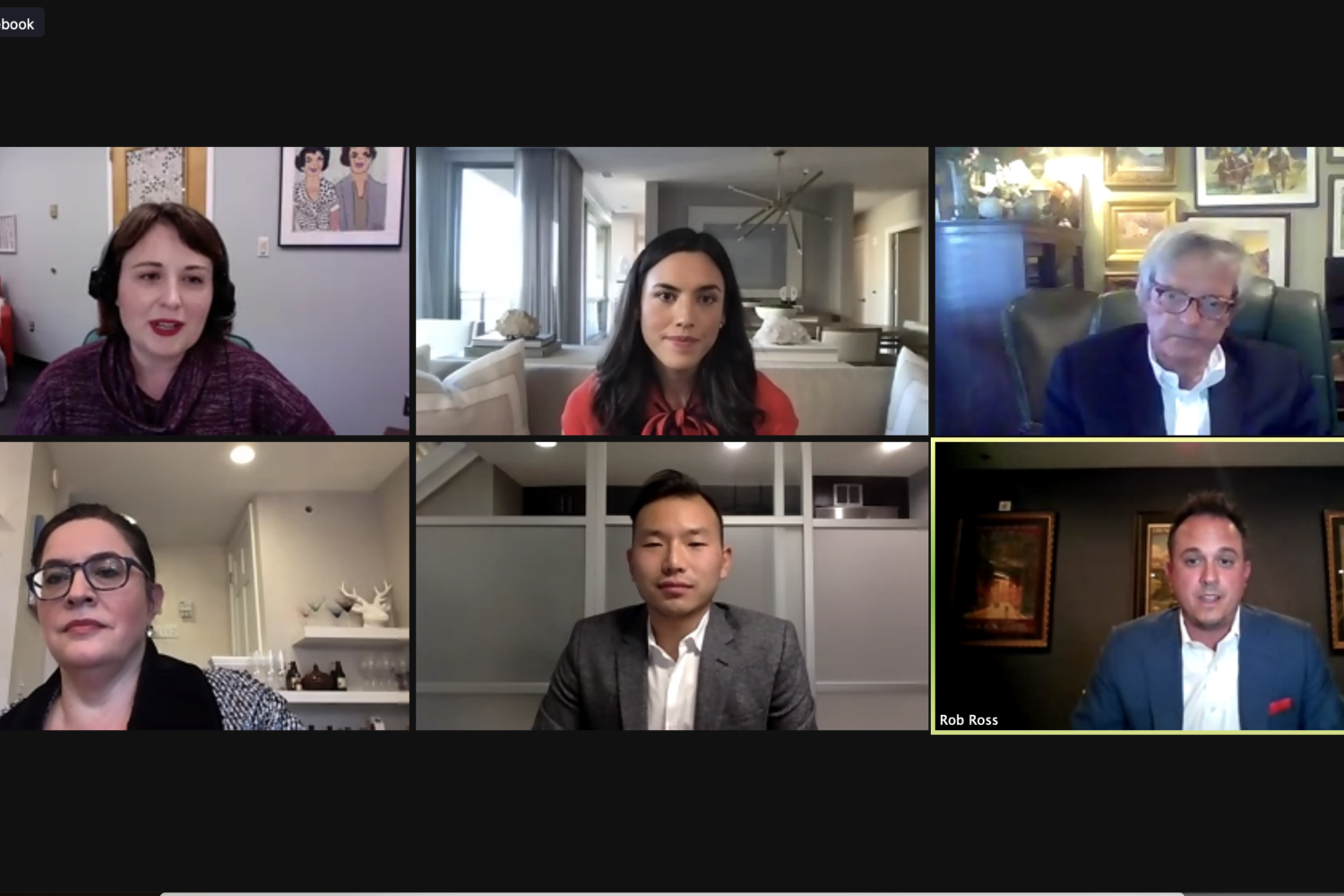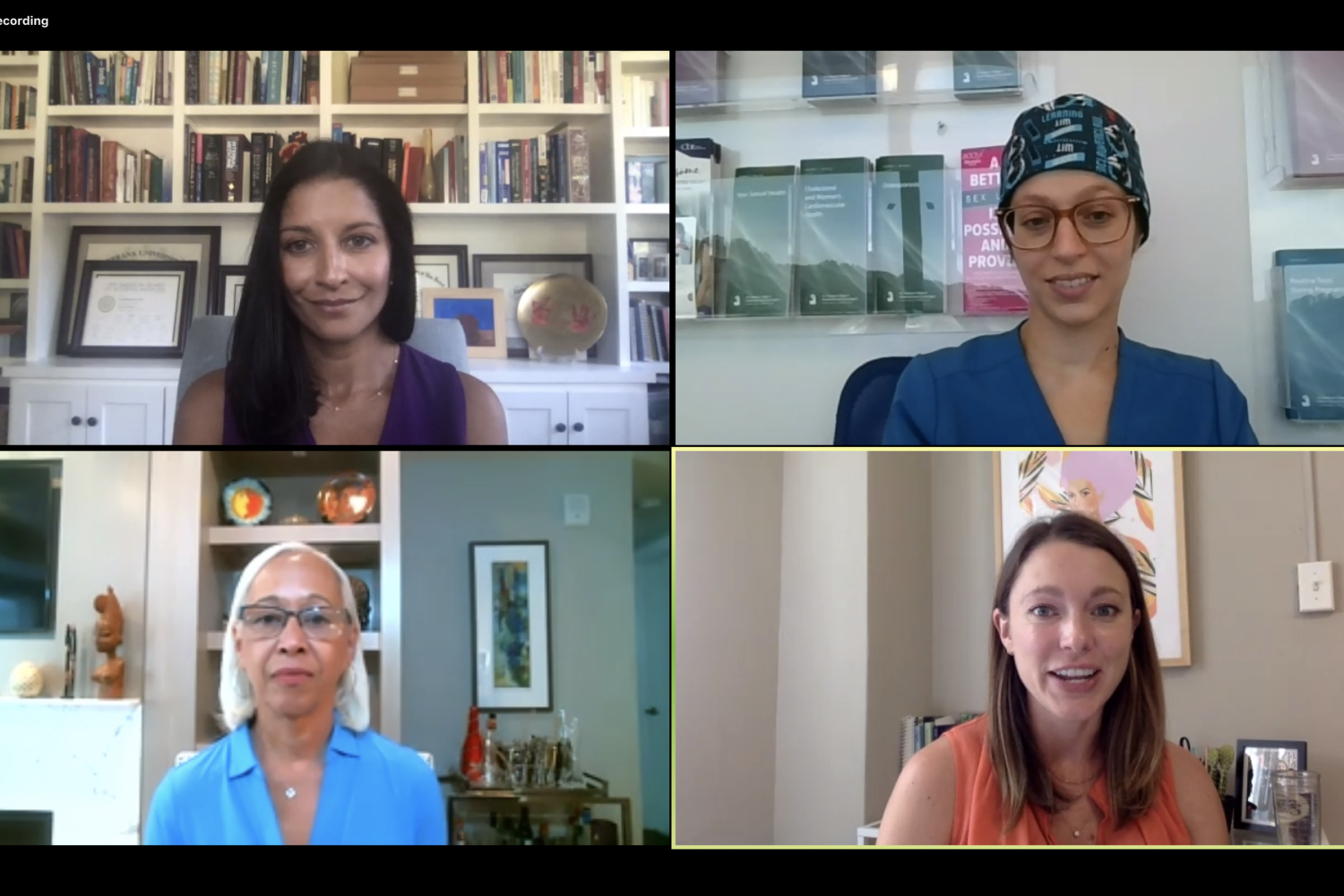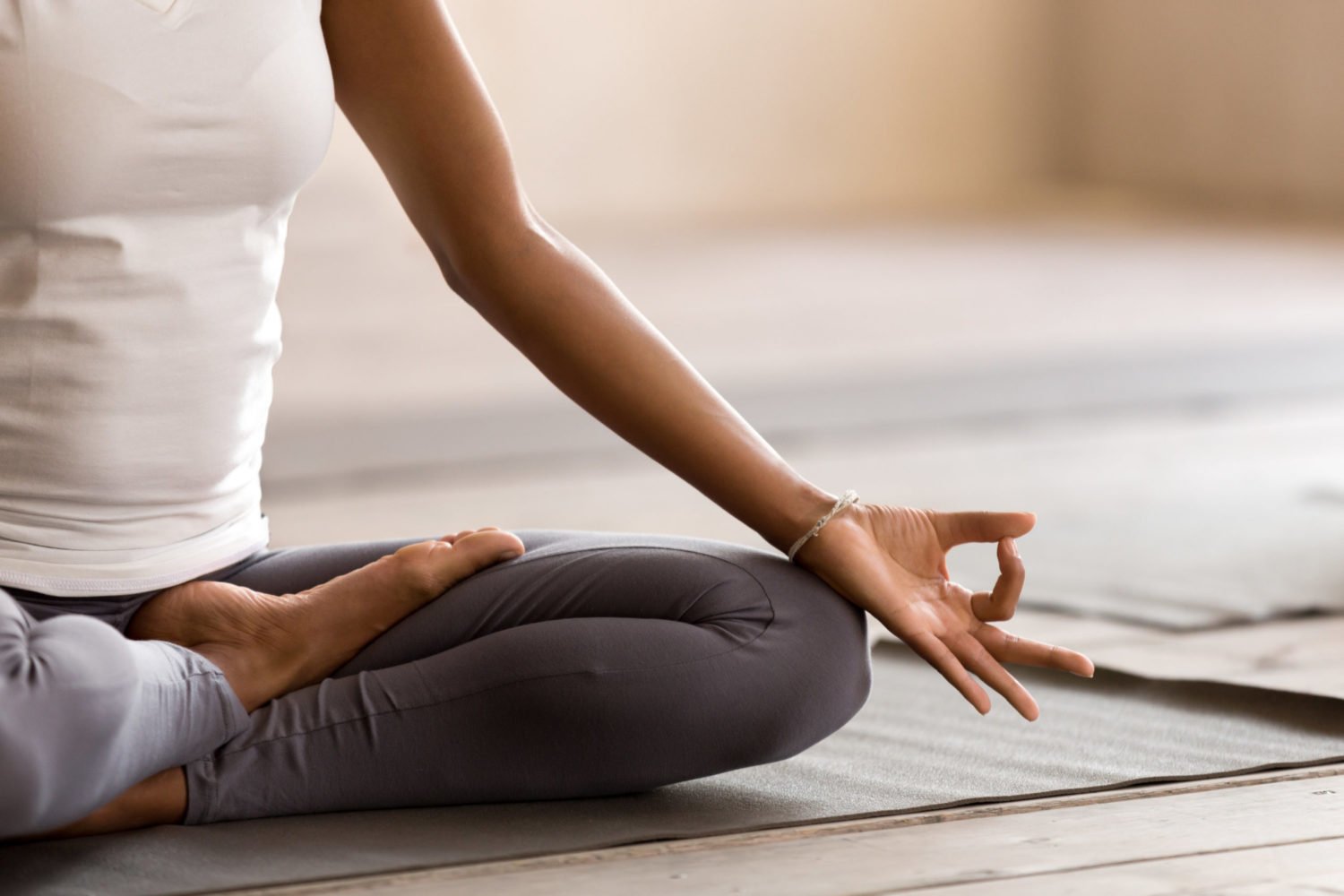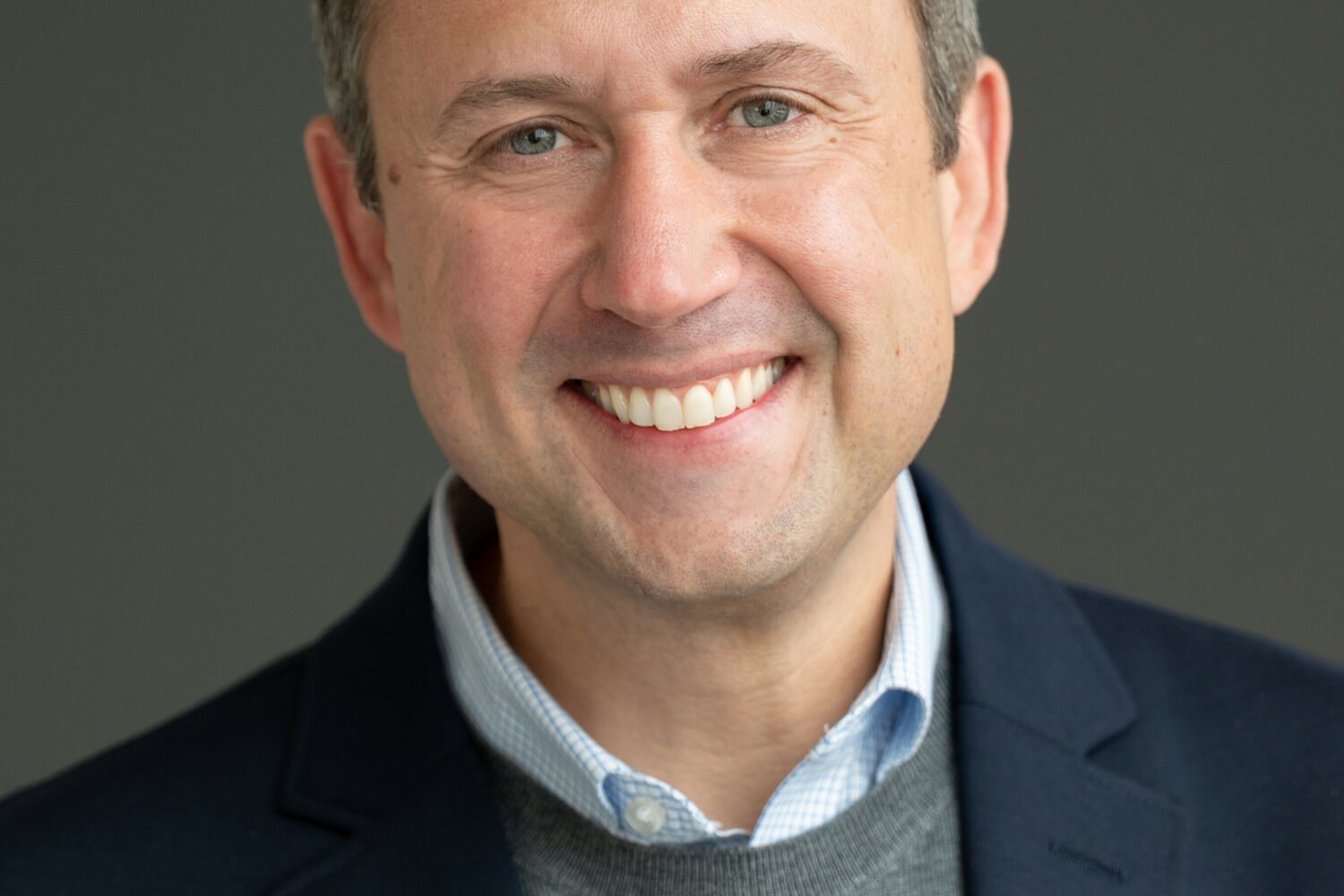In 2007, as Senator Barack Obama was launching his run for the presidency, Chicago newspaper columnist Lynn Sweet went to a fundraiser where the candidate and his wife were to speak. Sweet knew the Obamas well enough to know that Michelle Obama, a Harvard-trained lawyer, would emerge as a key player in her husband’s White House bid.
Allowed into the private event only for Barack’s speech, the Sun-Times columnist ducked into a room next to the ballroom of the Chicago Hyatt and pressed her ear to the wall when it was Michelle’s turn at the microphone.
“She sounded like Obama in soprano,” Sweet recalls. “Same mesmerizing style and cadence, similar message.”
A year and a half later, there are few walls between the candidates’ wives and the American people. Both Michelle Obama, 44, and Cindy McCain, the 54-year-old wife of GOP nominee John McCain, have been on magazine covers, on TV talk shows, in countless high-school auditoriums and hotel banquet rooms as they’ve introduced themselves to a public that’s trying to picture each of them in the East Wing of the White House.
The women have navigated the campaign trail in different ways. Obama has crisscrossed the country on her own as number-one surrogate and impassioned speaker. Her husband, she told Vanity Fair last year, is “ready to change the world.” McCain prefers to campaign alongside her husband, usually making only introductory remarks. But they’ve both hit the key spots on the political-wife circuit—girl talk on The View, glam shot in Vogue—and revealed everything from their tax records to their taste in music (McCain likes Cream and the Rolling Stones; Obama is a fan of Stevie Wonder and Lauryn Hill).
Their every move has been scrutinized, from Obama’s fist bump with her husband to McCain’s hairstyle changes. And their wardrobes have been analyzed like a cryptic code. Did Obama choose a purple dress because it’s the color of royalty or because, with a political map in mind, it’s a mix of red and blue? Is she going after a Jackie Kennedy look with her hair flip and jewel-toned sheath dresses? Does McCain, who travels with a stylist, really wear size-zero jeans? (Yes, according to Vogue).
Along the way, each has had image problems. Obama has had to prove she’s not a wild-eyed radical after an early gaffe in which she said she’s been proud of her country only since her husband has been running for president. She’s become more scripted in recent months and toned down her speeches, playing up her soccer-mom side after early reviews called her sarcastic and angry.
McCain often stands beside her husband with a Pat Nixon–like gaze—the picture of political-wife perfection with her dance-school posture and French-manicured nails. She’s had to counter the perception that she’s merely a trophy wife, an empty (Escada) suit.
“I think that’s a misreading of her,” says John McCain biographer Robert Timberg. “Cindy is much more accomplished than people think.”
In fact, both spouses are professional women who have held executive jobs as they’ve raised their children. McCain is chair and majority owner of her family’s beer business, Hensley & Co., with her share estimated at about $100 million, and is involved in humanitarian groups that bring help to some of the world’s bleakest regions. She has earned a pilot’s license and bought a plane; several years ago she learned to drive racecars.
“She likes to go fast,” says her longtime friend Betsy Bayless, a former Arizona secretary of state.
Until she went on leave to work for the campaign full-time, Obama was vice president for community affairs at the University of Chicago Medical Center, where she earned $273,618 in 2006, according to her tax records, and sat on half a dozen boards. An athletic five-foot-eleven, she’s so passionate about exercise that she used to get up at 4:30 am to start her workout, which included running up eight flights of stairs to her gym.
Michelle Obama’s life story—in some ways as inspiring as her husband’s—has been a key part of the campaign’s narrative. The daughter of a working-class family, she grew up in a one-bedroom apartment on the South Side of Chicago, followed her basketball-star brother (now coach at Oregon State University) to Princeton, and went to Harvard Law School.
She met her future husband when she worked at the law firm Sidley Austin in Chicago and was assigned to be the adviser to summer associate Barack Obama. They married in 1992 and had two daughters, Malia, now ten, and Natasha, seven. Like her GOP counterpart, Michelle stayed back home with her children when her husband went to Capitol Hill.
Cindy McCain is less well known, according to polls, despite the fact that her husband has been in Washington for more than two decades.
An only child born into one of the richest families in Arizona, she chose not to join the family business after college at the University of Southern California and instead worked in a poor Phoenix neighborhood as a special-education teacher.
She met John McCain, a Navy captain and celebrated Vietnam prisoner of war whose first marriage was coming apart, while on a trip with her parents to Hawaii in 1979. A year later, they married and settled in Arizona.
Cindy, 18 years younger than her husband, tried life as a political spouse when he was elected to Congress in 1982. But, unhappy in Washington, she headed back to Arizona, where she gave birth to and raised three children—Meghan, who now writes a blog about her father’s campaign; Jack, a Naval Academy midshipman; and James, a Marine who has served in Iraq.
She started a nonprofit to bring medical teams to developing countries and in 1991, after a trip to Bangladesh, returned home with two infant girls from Mother Teresa’s orphanage who needed medical care. She informed her husband that one of the babies was to be his new daughter. Bridget, whom the McCains adopted, is now 17. A friend adopted the other girl.
McCain’s philanthropic work has often been overshadowed by brushes with scandal and other difficulties. In the late 1980s, when her husband was being questioned as part of the “Keating five” investigation, Cindy couldn’t find receipts to prove the McCains had paid for flights aboard jets owned by developer Charles Keating. Distraught and suffering from a ruptured disk, she became so addicted to prescription pain pills that she began stealing drugs from her own charity. In 2004, at age 49, she had a stroke and—barely able to speak, walk, or eat—moved to San Diego to recover while friends cared for her children back home.
Recent attention has focused on her wealth; her multiple homes in Arlington, Arizona, and California (including two pricey condos by the beach in Coronado); and her salary—$6 million in 2006, according to tax records she released reluctantly last spring.
Unlike Michelle Obama, who headlines rallies and $1,000-a-ticket receptions and holds working women’s roundtable discussions, Cindy McCain has been a quieter presence on the trail.
Most people heard her voice for the first time in February when she appeared with her husband at a televised press conference to denounce a New York Times story suggesting the senator had an improper relationship with a female lobbyist. That same week, she chided Michelle Obama for saying she hadn’t been proud of her country before now. “I’m proud of my country,” Cindy McCain told an audience. It was an uncharacteristic jab from a woman who, stung by a smear campaign aimed at her and her adopted daughter when her husband ran for president in 2000, has tried to stay in the shadows and away from conflict.
It’s easy to envision McCain as a traditional First Lady—showing reporters the White House holiday decorations, wearing designer gowns as she plays hostess at state dinners—in the mold of Laura Bush.
Though McCain has called herself her husband’s best friend and closest adviser, her advice isn’t likely to involve public policy. She has said she has no intention of sitting in on Cabinet meetings, as Rosalynn Carter did, but would continue her involvement in humanitarian missions and would champion causes that have long been important to her, such as special education.
Bayless believes that as First Lady her longtime friend would be more outgoing and less reserved than she’s been on the campaign trail: “You’d see the real Cindy.”
Obama recently told Ebony magazine that her first priority in the White House would be to continue as “mom-in-chief,” making sure her girls know they’re still “the center of our universe.”
She has said there would be too many conflicts of interest for her to continue practicing law if she moves to the White House. Instead, those close to her say, she would take on issues related to women and families, such as work/family-life balance and concerns of military spouses.
Although Obama doesn’t shy away from talk of issues in her appearances, campaign officials say she’s not interested in a Hillarylike policymaking role. “She talks about policy as it relates to people’s everyday lives, from the kitchen-table perspective,” says Katie McCormick Lelyveld, her spokeswoman.
For all of their differences, Michelle Obama and Cindy McCain both suggest they’d want to be fairly typical First Ladies—hardly a surprise for two smart, cautious women who know that their every remark, gesture, even fashion accessory can become a headline.
Have something to say about the first ladies in waiting? Leave your thoughts below, and your comment could appear in our next issue.
This article first appeared in the September 2008 issue of The Washingtonian. For more articles like it, click here.

